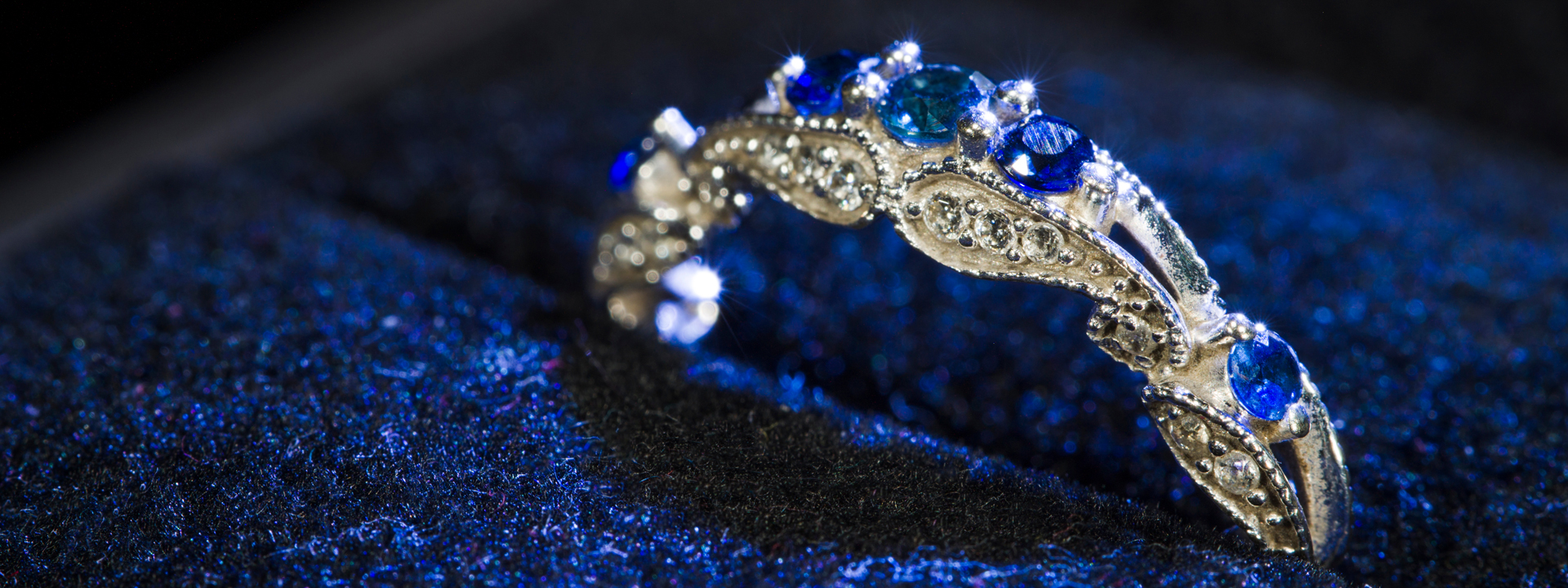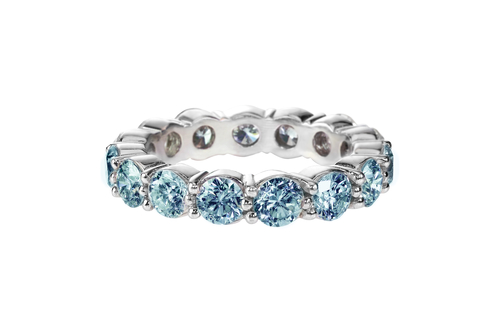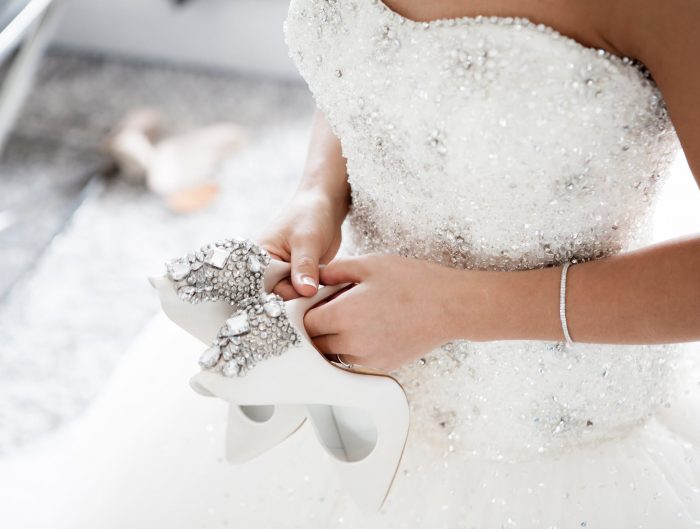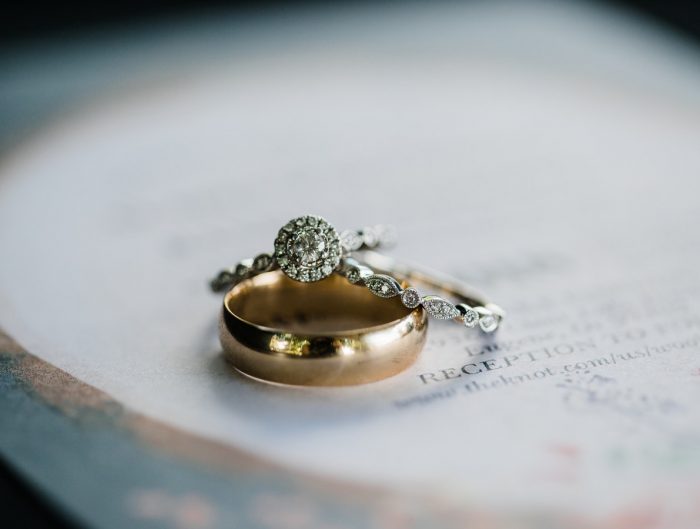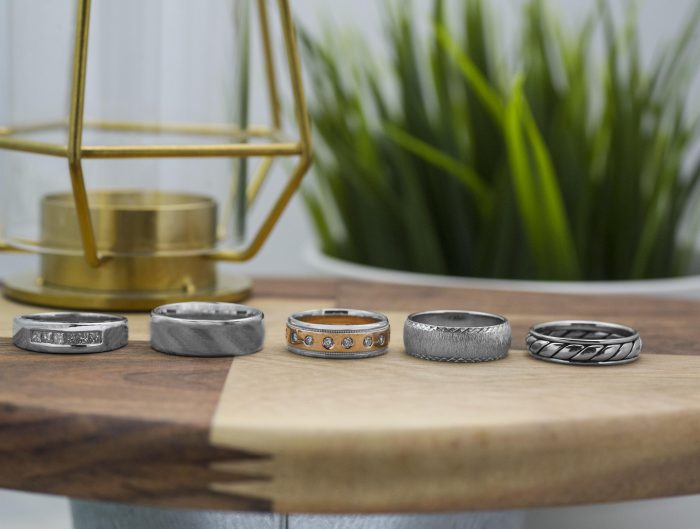The second hardest gemstone after diamond, sapphire has long been a popular choice for wedding rings and wedding bands. Its recognizable and universally loved blue color has made innumerous brides fall in love. Perhaps owing to its durability, the symbolism behind sapphires tells us that this coveted gemstone signifies wisdom and honesty.
Even though it’s highly durable, sapphire needs regular care. Whether your engagement ring features a sapphire center stone or you opted for an antique sapphire wedding band, pay attention to these important facts about sapphire, including how to care for it properly.
Old-world romance and royalty
If we say that sapphire is often associated with royal love, we aren’t exaggerating in the slightest. Sapphire is actually the preferred engagement ring gemstone for the British royal family. Kate Middleton, Duchess of Cambridge, was presented with a sapphire engagement ring, which had also been presented to the late Princess Diana.
Something old, something blue… an antique sapphire wedding band!
Besides the symbolism behind sapphires, there is added symbolism to a blue wedding ring. Why can’t your something blue be something old at the same time? Which means – an antique sapphire wedding band may be just what you need!
The power of blue
A perfect blue sapphire is velvety blue to violetish blue, in medium to medium dark tones, and is actually the most desirable and the rarest sapphire of all. Some of the finest blue sapphires in the world are found in Sri Lanka or Burma. Perhaps the second most expensive sapphire is the pink-orange padparadscha from Sri Lanka.
Blue is not the only hue
Not everyone knows that sapphire – the mineral corundum – appears in every color of the rainbow, from white and yellow to green and pink – but not red, because red corundum is called “ruby.” Although blue is the most popular color, it may not be flattering to all skin tones. For example, the much-coveted royal blue pops against olive complexions, while pastel undertones look great against light skin tones. For darker skin tones, deep cobalt hues are the best choice.
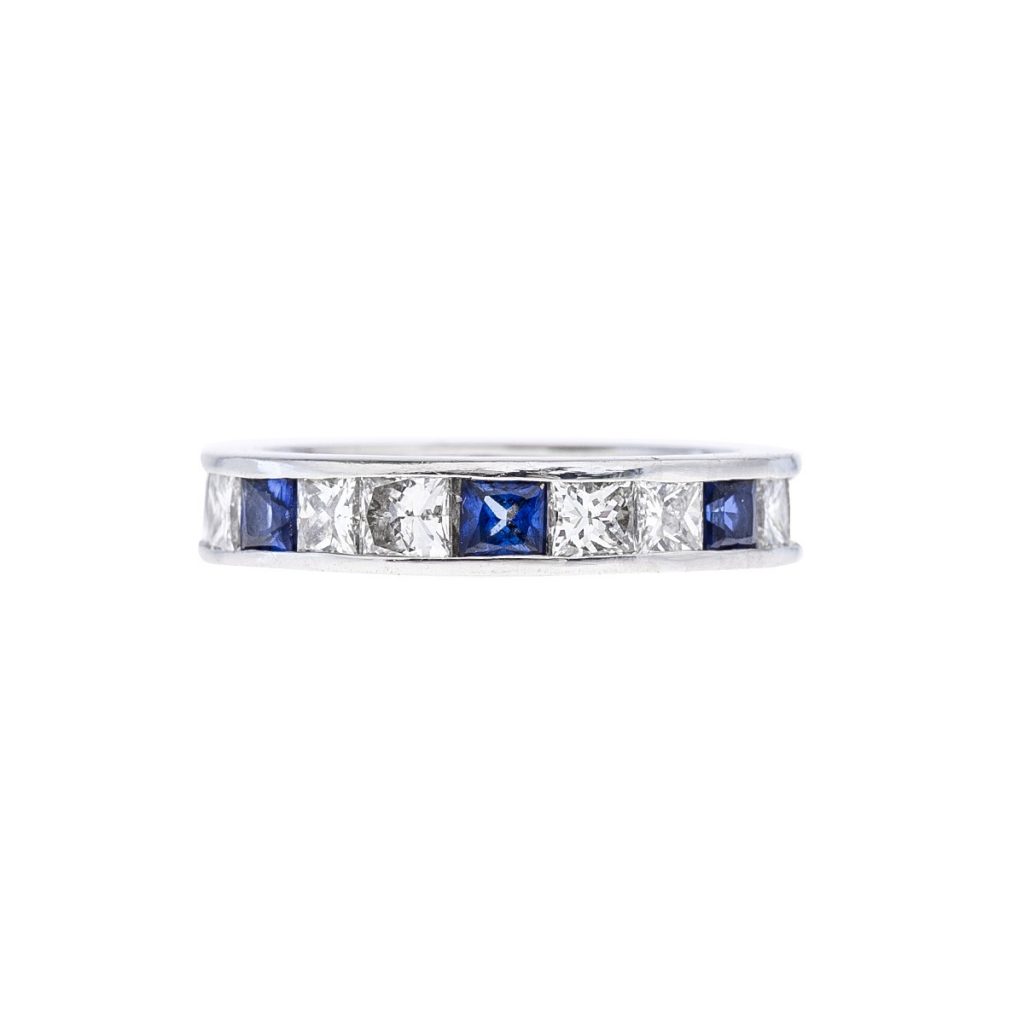
The role of secondary colors
Depending on the angle at which the stone is exposed to light, you can see different secondary colors. These colors will influence the value and price of a sapphire ring. For example, blue sapphire rings that display secondary purple or violet hues are significantly more expensive than those displaying yellow, green or gray flashes. Therefore, purple and violet are the most desirable secondary hues in sapphires, closely followed by white.
Symmetrical cut
While the cut and shape of a diamond will greatly influence its sparkle, this is not the case with sapphires. Unlike diamond, corundum is not known for its scintillation. Besides striking color, what is desired in a colored gemstone like sapphire is a nicely symmetrical cut, even color throughout the stone, and a consistent sparkle. Combined with its durability, this trait is one of the reasons why modern brides may go for an antique sapphire wedding band, especially if it’s a family heirloom.
Tender care for a durable gemstone
Sapphires may be ‘’tough’’ but that doesn’t mean they don’t need proper care. To make sure every single gemstone on your beautiful wedding band stays in tiptop condition, take care of your ring regularly and properly.
Sapphire rings and bands will need an in-depth professional cleaning at least once a year, and to have the prongs checked quarterly or more often if your lifestyle is very active. For everyday cleaning, you can use warm water, mild soap and a soft-bristle toothbrush. Clean gently, rinse thoroughly, and admire the sparkle for years to come.
At Leo Hamel Fine Jewelry & Engagement Ring Store, our expert jewelers can help you pick out a truly unique engagement ring and wedding band. Modern sapphire rings are quite striking, or you may yearn for an antique sapphire engagement ring and wedding band. Whatever your heart desires, stop by our showroom on San Diego Avenue and we’ll help you find your ideal gem!

